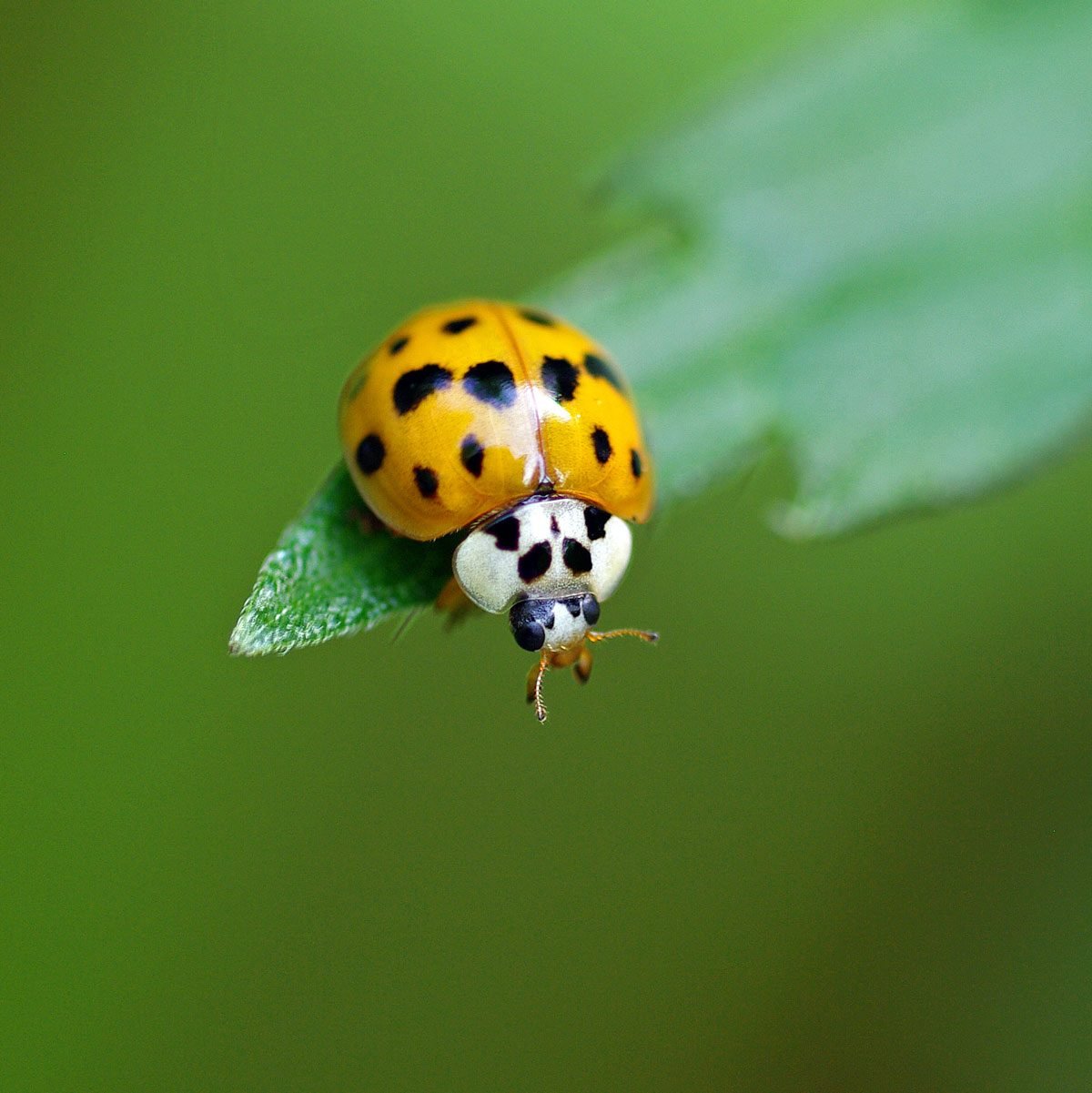They both have black spots and dine on aphids. So what's the difference between the ladybug and the Asian lady beetle?
Our editors and experts handpick every product we feature. We may earn a commission from your purchases.Learn more.


They both have black spots and dine on aphids. So what's the difference between the ladybug and the Asian lady beetle?
Our editors and experts handpick every product we feature. We may earn a commission from your purchases.Learn more.
We all love the adorable little ladybug. There are hundreds of species of lady beetles or ladybugs in the United States, some native to North America and some introduced. Several species of native ladybugs have become rare, such as the 9-spotted ladybug. Others, like the Asian lady beetle, are invasive species that have crowded out the native insect population.
On This Page
While both are a species of lady beetle, there are some big differences. Native ladybugs primarily eat aphids. They do not bite, and they don’t seek shelter in warm places over the winter. But if they are still bothering you, here is how to get rid of ladybugs. Asian lady beetles (also known as Japanese lady beetles, harlequin ladybirds or Halloween bugs) also eat aphids and other pests. But they eat other insects as well, including native ladybugs. Asian lady beetles invade warm houses and buildings over the winter, and will gather in groups on brightly-colored surfaces or windows. Asian lady beetles will bite, and they sometimes secrete a smelly liquid that can affect some people with allergies or asthma.
We brought it here. The USDA imported the insect in the early 20th century as a natural pest control for crops. A population established itself near New Orleans in the late 1980s, and today it is found in most of the United States.
The most common species of native ladybug, the convergent lady beetle (Hippodamia convergens), has 13 or fewer spots on the bright reddish-orange or red forewings. The convergent lady beetle has two white lines that meet or converge behind the head, giving the insect its name.
The Asian lady beetle (Harmonia axyridis) can have many spot patterns. It varies in color from yellow to red-orange or even black, but it always has lines that curve inward to form an “M” or “W” pattern behind the head.
Both insects are predators of aphids that feed on plant juices and damage vegetable, flower and tree fruit crops. The native ladybug only eats soft-bodies plant pests like aphids or insect eggs that are laid on leaves. This is usually the type of ladybug that is collected and sold as a natural pest control for gardeners.
Asian lady beetles prefer aphids, but will eat other ladybug species and will infest fall fruit like grapes, apples and raspberries.
You might have some luck if you stop raking leaves. Ladybugs like to overwinter in leaf litter, unlike the Asian lady beetle which prefers your warm house. You could also put in aphid-loving plants to attract the native species, but the Asian lady beetle will be drawn to the same plants. You can also buy ladybugs, but there could be Asian lady beetles mixed in, and most will fly away if there is no available food source.
The best plan of action is to remove the Asian lady beetles when you see them, and offer the native species a safer environment. If the Asian lady beetles are inside, vacuum them up using a vacuum with a HEPA filter, or sweep them with a broom into a dustpan and dispose of them. If they are outside and you are positive they are Asian lady beetles, you can pick them off and dispose of them. Make sure you are not removing native ladybugs!
If you spot a ladybug in your garden, try to snap a clear picture of it. The Lost Ladybug Project, a Cornell University and 4-H partnership, encourages gardeners to log visits of any rare species of ladybugs.